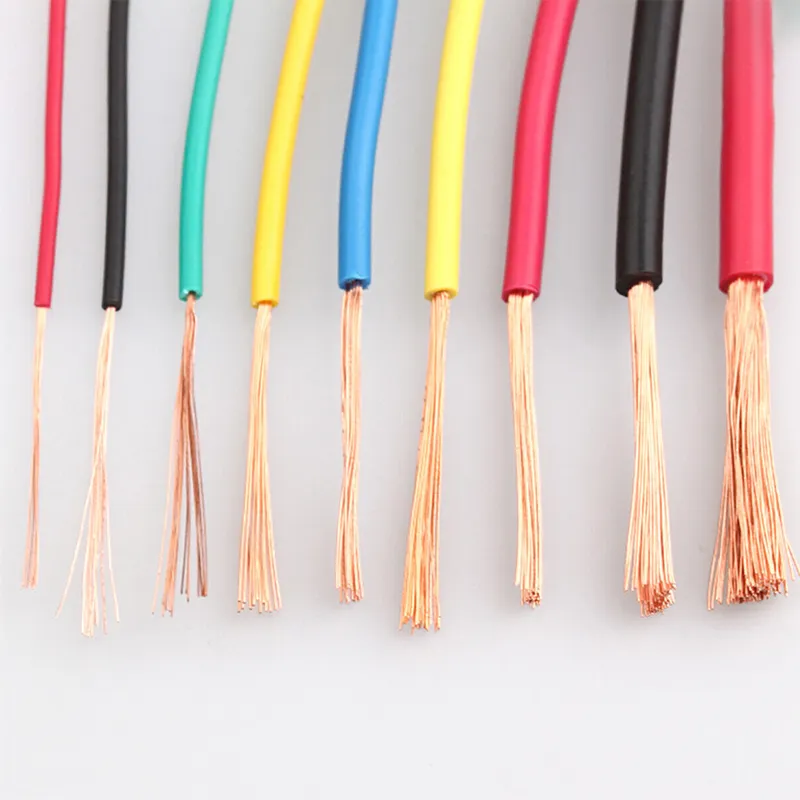
A COMPREHENSIVE LIST OF BUILDING WIRE IN THE HOUSING MARKET IN 2022
A COMPREHENSIVE LIST OF BUILDING WIRE IN THE HOUSING MARKET IN 2022

This blog overviews the most popular types of building wire used in houses and commercial buildings.
What is a Building Wire?
Building wire is the most popular subtype of wire and cable, with the most significant share of the market. This subtype of wire and cable is used in the construction of commercial, residential, and industrial buildings. They are most commonly used as power cables in branch circuits.
Building Wire vs. Home Wiring
Building wire is often referred to as home wiring because building cables are used in homes as power cables. However, the term "home wiring" also encompasses other non-power cables used in homes, such as communication cables (twisted pair, coaxial, fiber optics, USB) and low-voltage 30V appliance cables that are not building wire.
Popular Types of Building Wire On Housing Market
THHN (Aluminum/Copper)
THHN is simply the most popular type of wire and cable used in the construction of all types of buildings. This single-conductor wire is also perhaps the market's most versatile subtype of building wire. It is used as a hook-up wire, machine tool wire, circuit wire, and appliance cable. In private homes, THHN wire is often used in conduit in areas like basements and garages.
THHN is coated with nylon and has high heat resistance. THWN, a variation of THHN, has the added benefit of water resistance. Perhaps, the one possible drawback of this highly versatile cable is that it is not approved for direct burial. Read this blog to learn more about burying THHN in conduit.
60227 IEC 01 STANDARD 450/750V BV BVR 6491X H07V-U H07V-R NYA BUILDING WIRE
XHHW (Aluminum/Copper)
XHHW/XHHW-2 is, in many ways, a cable very similar to THHN but with a more expensive thermoset XLPE insulation. This insulation has a better resistance and makes for a more flexible cable. However, this makes XHHW/XHHW-2 a more expensive cable than THHN. Here is a more detailed overview of the differences between THHN and XHHW ratings.
VNTC Tray Cable
VNTC is a THHN/THWN cable improved by two valuable features: it can be installed in trays and buried directly in the ground. One of our earlier blogs explores VNTC in greater detail.
SER (Aluminum/Copper) and SEU (Aluminum/Copper)
Service entrance cables are cables used in panel feeders and branch circuits to bring power from the source to buildings. They have XHHW-2- like insulation and are not used for any other purpose inside a house. Click here to read about the differences between SER and SEU. Service entrance cables are used in both private homes and multi-storeyed buildings.
Aluminum MC
MC cable is used as a power cable in Commercial, industrial, and residential buildings of all types and heights. It can be used as an alternative to building wire in conduit. The cable is commonly used in large appliances.
XLP USE RHH RHW-2(Aluminum/Copper)
This is a building wire with RHH RHW-2 rubber insulation that is slightly heavier than other types of insulations used with home wiring. It is used for all types of lighting and power uses in buildings. USE cables are approved for direct burial.
UF-B Cable
UF-B cables are used for underground wiring outside buildings as underground feeder cables and for lighting. In conduit, they can also be used above the ground. This is one of the more expensive building wires. The difference between USE and UF-B rating is explored here.
NM-B Romex
NM-B, or Romex, is the most common interior wiring in buildings. Its full name is a non-metallic sheathed cable. The name "Romex" comes from the most known brand of NM-B. The cable is used inside the buildings without a conduit. It is not approved for exterior wiring due to a lack of moisture resistance. It is also not used in buildings taller than three stores. For a detailed comparison of NM-B and THHN, click here. Or read this to compare UF-B and Romex.-
Reliable LIYCY Cable Solutions for Low and Medium Voltage ApplicationsNewsJul.14,2025
-
Premium Overhead Electrical Wire Solutions for Low and Medium Voltage ApplicationsNewsJul.14,2025
-
Innovative XLPE Electrical Cable Solutions for Modern Low and Medium Voltage NetworksNewsJul.14,2025
-
High-Quality Ethylene Propylene Rubber Cable – Durable EPDM Cable & 1.5 mm 3 Core OptionsNewsJul.14,2025
-
Exploring the Versatility of H1Z2Z2-K 1X4mm2 Cables in Modern ApplicationsNewsJul.14,2025
-
Uses of Construction WiresNewsJul.14,2025
-
Types of Neoprene CableNewsJul.14,2025















